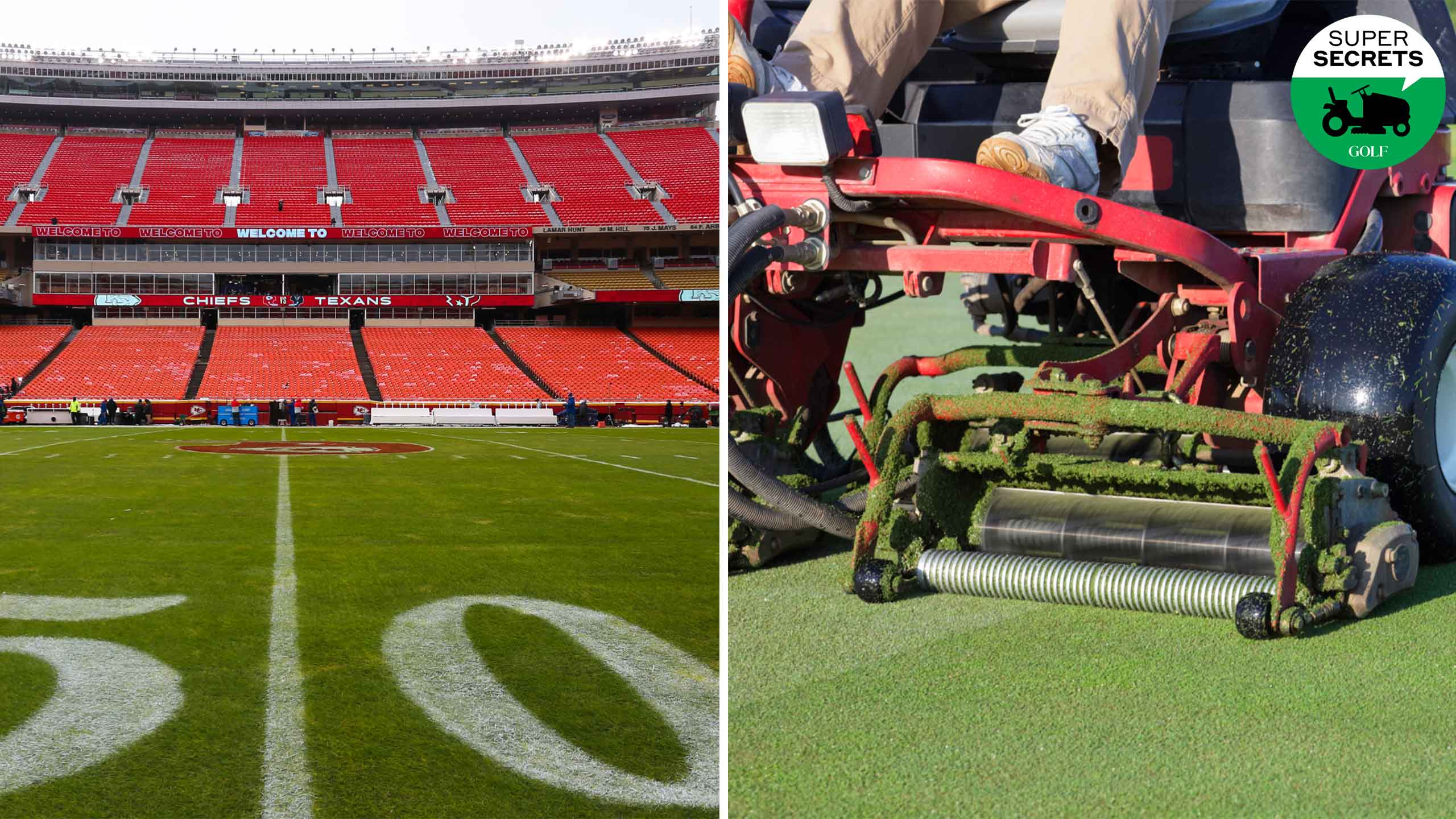Are you ready for some football?
Travis Hogan always is.
A former superintendent who cut his teeth in Monterey at Pebble Beach and Spyglass before running the agronomic show at several courses in his native Missouri, Hogan is now the head groundskeeper for the Kansas City Chiefs, a post he’s held since 2016.
Strokes-gained. Yards gained. Golf and football are not at all alike, but both depend on safe and well-maintained playing surfaces. With the NFL season kicking off this weekend, GOLF.com asked Hogan to compare and contrast the turf-care practices and challenges in the two sports.
1. Turf type matters
In golf, grass varietals are chosen with such factors in mind as climate, frequency of use and desired style of play. All of those turf factors apply in football, too, with the highest priority placed on safety. Arrowhead Stadium, the Chiefs’ home field, is planted to NorthBridge Bermudagrass, which is fine-textured but also cold-tolerant and resilient. In addition — and crucially for Hogan — it can stand up to heavy traffic even after it goes dormant in the fall or winter.
The Chiefs, Hogan says, play an average of four games a year on dormant Bermuda. And like many superintendents, he overseeds when his warm-climate turf begins its seasonal slumber. The timing varies depending on the weather, but the end of September is when Hogan and his crew usually begin adding a blend of cool-climate fescue and rye.
2. What lies beneath
What does the gridiron have in common with a championship-worthy green: both are built to USGA specs, with layers of sand and gravel underneath them to help ensure good drainage and healthy turf. Arrowhead is not Augusta. It is not equipped with a SubAir system for sucking moisture out of the soil. But it does have superb drainage, along with an underground heating system, which can be used to promote growth.
3. No rain delays. No frost delays. No excuses
In golf, most events are held in peak season when courses have the best chance of being primo. And if the weather’s downright awful, you can wait. In football, groundskeepers get no such leeway. “That’s probably the biggest different,” Hogan says. “We’re playing whenever kickoff is.”
4. No traffic control
While superintendents can rope off areas to protect them from foot traffic, groundskeepers can’t. And depending on the schedule, that traffic might keep coming for three consecutive weeks “The closest analogy I can come up with is to put your tee markers 18-and-half-feet apart and keep them in the same spot every Monday,” Hogan says. “Then host a full-course shotgun tournament three weeks in a row.”
5. Punching, sanding, rolling
“The smoothness that is desired in golf really helps in football,” Hogan says. “We’re basically looking to make the surface as close to a tee box as we can.” To that end, Hogan and his crew do like superintendents by punching, sanding and rolling the field. Usually, this happens six to eight times a year, though high-traffic areas, like the mouth of the tunnel, might get even more frequent attention. Says Hogan: “The majority of the things we do, whether it’s aerating or applying organic fertilizers and growth regulators, I learned from golf.”
6. Mown to fairway height
In football, as in golf, mowing heights vary with the time of year, but, Hogan says, “we’re always trying to keep it as tight as we can.” At the start of the year, he and his crew aim for a smidgen over a half-an-inch (9/16th’s if you want to get precise), depending on the weather. But by the end of the season, they might get up to three-quarters of an inch. No matter how you do the numbers, most footballs are kept at about fairway height. As on a course, mowing frequency varies, too.
At Arrowhead, Hogan and his crew might go from every day or every other day in September to twice a week in December and January, when lower light leads to slower growth. An exception is the end zone at the east side of the stadium, which is cast in shade for much of December through March. During those months, that portion of the field might only get mown once a week.
7. The foot traffic is heavier, literally
In golf, Brooks and Bryson count as big boys. They wouldn’t stand a chance on the line of scrimmage. “You don’t have many 350-pounders running full speed, cutting and twisting on a tee or a green,” Hogan says. “And you definitely don’t have a couple of 350-pounds pushing against one another on a green or a tee.” Foot traffic alone is not what does the damage, even with players wearing long cleats. “It’s more about the running and the stopping and the pushing,” Hogan says. “That’s what really tears you up.”
